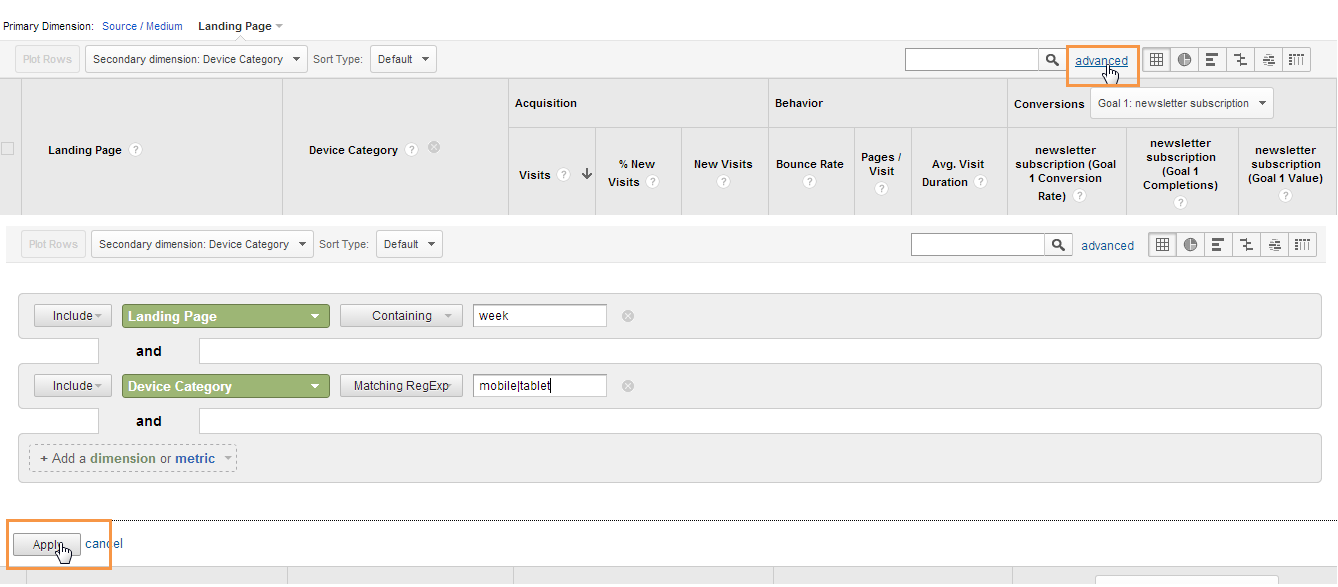Improving Data Accuracy: Google Analytics Secondary Dimension Insights
Improving Data Accuracy: Google Analytics Secondary Dimension Insights
Blog Article
Maximizing Your Digital Technique With Additional Dimension Analytics: a Comprehensive Guide
In the world of digital strategy, the application of additional measurement analytics can use an extensive understanding of individual behavior and internet site performance. By diving deeper into the layers of information beyond the key metrics, companies can reveal important understandings that pave the means for calculated decision-making and boosted performance.
Recognizing Additional Measurement Analytics
Comprehending Second Dimension Analytics supplies an important understanding into the sophisticated logical tools made use of in modern data evaluation practices. These analytics dig much deeper than primary dimensions, supplying a more detailed understanding of information patterns and patterns. By integrating second dimensions, analysts can segment and filter information to uncover concealed understandings that may not be evident with key analysis alone.
Second Dimension Analytics enables an extra granular evaluation of data by introducing added parameters that can be related to the main measurements - secondary dimension. This strategy permits a much more nuanced examination of numerous data points, causing a more detailed evaluation of complicated datasets
Additionally, Second Dimension Analytics plays a significant duty in boosting data visualization strategies. By incorporating additional measurements right into graphes, such as graphes or graphs, analysts can offer data in an extra comprehensive and interesting way, making it less complicated for stakeholders to make and comprehend vital insights notified choices based on the data offered.

Applying Additional Dimensions Efficiently
Using secondary dimensions tactically enhances the depth and precision of information analysis processes, enabling more accurate understandings and notified decision-making. When executing second dimensions successfully, it is critical to first determine the key metrics that align with your details goals and purposes. By picking the most pertinent additional measurements, such as demographics, actions, or modern technology, you can customize your evaluation to essence purposeful understandings.
In addition, arranging and structuring your secondary dimensions in a rational way within your analytics platform can simplify the data interpretation procedure. secondary dimension. This involves classifying measurements based on their partnerships and relevance to the main metrics being assessed. Developing custom records or control panels that include these additional dimensions can also promote a more detailed understanding of customer interactions and behaviors
Moreover, regularly reviewing and changing your additional dimensions based upon the advancing demands of your electronic approach is vital for maintaining the importance and effectiveness of your data evaluation efforts. By continually maximizing the use of secondary dimensions, you can take full advantage of the utility of your analytics tools and drive educated decision-making within your company.
Analyzing Data for Actionable Insights

To start the process of analyzing information for workable understandings, it is necessary to establish clear objectives and vital efficiency indicators (KPIs) that line up with the company's goals. By specifying what success resembles for the specific metrics being assessed, it becomes less complicated to determine purposeful patterns and trends that can inform decision-making.
Additionally, using tools such as division and comparison evaluation can supply added context to the data, permitting even more nuanced insights to be drawn. By breaking down information right into smaller sized, extra manageable subsets, organizations can reveal hidden possibilities and areas for enhancement that might not appear when considering the information all at once.
Optimizing Digital Technique With Findings
Enhancing digital approaches with workable insights gleaned More Info from information analysis is important for attaining optimum efficiency in today's affordable landscape. Once important findings have been removed from the information, the following step is to utilize these insights to optimize digital approaches efficiently. One vital aspect of this optimization procedure is the identification of fads and patterns that can assist decision-making and resource appropriation.
By assessing the data findings, services can pinpoint locations of strength and weakness within their electronic method. This information can after that be utilized to refine advertising and marketing projects, enhance user experience, and drive total efficiency enhancement. For example, if the information reveals a certain demographic group that is very engaged with specific kinds of web content, organizations can customize their methods to better target and satisfy this audience sector.
Additionally, enhancing digital method with findings additionally entails continuous surveillance and analysis to make sure that the executed adjustments are creating the preferred outcomes. By iteratively fine-tuning approaches based on data-driven understandings, companies can remain ahead of the competition and adjust to the vibrant electronic landscape effectively.
Determining Success and Iterating
Gauging success in digital approach application includes evaluating key efficiency indications to gauge the efficiency of techniques and strategies released. This evaluation is important in identifying the effect of the electronic efforts on the total organization objectives. By tracking metrics such as site traffic, conversion prices, click-through rates, and interaction degrees, organizations can examine the efficiency of their electronic projects and make data-driven choices for renovation.
Once the data has actually been accumulated and examined, it is vital to iterate on the methods based on the understandings obtained. By recognizing what is functioning well and what requires renovation, businesses can improve their electronic approach to improve outcomes.
Final Thought
In conclusion, including additional measurement analytics into your digital technique can boost and offer beneficial insights decision-making. By effectively applying and evaluating information, businesses can maximize their digital approaches for success.
Comprehending Additional Dimension Analytics offers a critical insight into the sophisticated analytical tools made use of in contemporary data evaluation practices. These analytics dive much deeper than main dimensions, supplying a much more extensive understanding of information patterns and patterns. By incorporating secondary measurements, analysts can section and filter information to uncover hidden understandings that may not be evident with key evaluation alone.
Using second measurements purposefully enhances the depth and precision of information analysis processes, allowing for more accurate understandings and notified decision-making.Moreover, organizing and structuring your additional measurements in a sensible manner within your analytics system can simplify the information analysis process.
Report this page